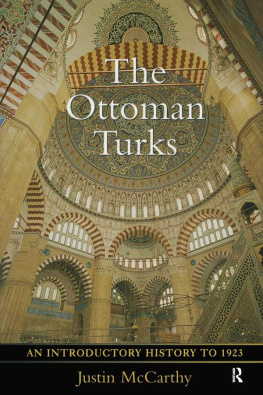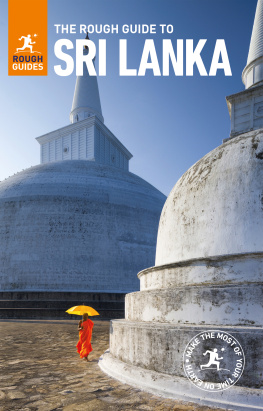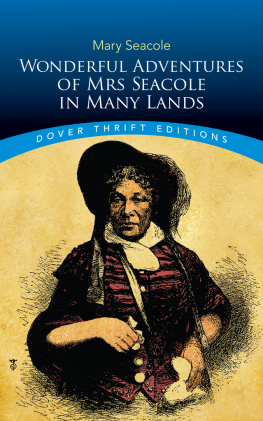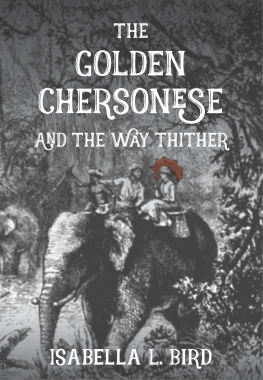Transcriber's note:
Page numbers in this book are indicated by numbers enclosed in curly braces, e.g. {99}. They have been located where page breaks occurred in the original book. For its Index, a page number has been placed only at the start of that section.
In the original volumes in this set, each even-numbered page had a header consisting of the page number, the volume title, and the chapter number. The odd-numbered page header consisted of the year with which the page deals, a subject phrase, and the page number. In this set of e-books, the odd-page year and subject phrase have been converted to sidenotes, usually positioned between the first two paragraphs of the even-odd page pair. If such positioning was not possible for a given sidenote, it was positioned where it seemed most logical.
In the original book set, consisting of four volumes, the master index was in Volume 4. In this set of e-books, the index has been duplicated into each of the other volumes, with its first page re-numbered as necessary, and an Index item added to each volume's Table of Contents.
A HISTORY OF THE FOUR GEORGES
by
JUSTIN MCCARTHY, M.P.
Author of "A History of Our Own Times" Etc.
In Four Volumes
VOL. I.
New York Harper & Brothers, Franklin Square 1901
CONTENTS OF THE FIRST VOLUME.
CHAP. PAGE
I. "MORE, ALAS! THAN THE QUEEN'S LIFE!"....... 1 II. PARTIES AND LEADERS............... 16 III. "LOST FOR WANT OF SPIRIT"............ 39 IV. THE KING COMES.................. 55 V. WHAT THE KING CAME TO.............. 63 VI. OXFORD'S HALL; BOLINGBKOKE'S FLIGHT....... 91 VII. THE WHITE COCKADE................ 116 VIII. AFTER THE REBELLION............... 135 IX. "MALICE DOMESTIC.FOREIGN LEVY"......... 158 X. HOME AFFAIRS................... 168 XI. "THE EARTH HATH BUBBLES"............. 183 XII. AFTER THE STORM................. 202 XIII. THE BANISHMENT OF ATTERBURY........... 211 XIV. WALPOLE IN POWER AS WELL AS OFFICE........ 224 XV. THE DRAPIER'S LETTERS.............. 240 XVI. THE OPPOSITION.................. 249 XVII. "OSNABRUCK! OSNABRUCK!"............. 262 XVIII. GEORGE THE SECOND................ 272 XIX. "THE PATRIOTS".................. 284 XX. A VICTORY FOR THE PATRIOTS............ 299 INDEX...................... 322
{1}
A HISTORY
OF
THE FOUR GEORGES.
CHAPTER I.
"MORE, ALAS! THAN THE QUEEN'S LIFE!"
"The Queen is pretty well," Swift wrote to Lord Peterborough on May 18, 1714, "at present, but the least disorder she has puts all in alarm." Swift goes on to tell his correspondent that "when it is over we act as if she were immortal; neither is it possible to persuade people to make any preparations against an evil day." Yet on the condition of Queen Anne's health depended to all appearance the continuance of peace in England. While Anne was sinking down to death, rival claimants were planning to seize the throne; rival statesmen and rival parties were plotting, intriguing, sending emissaries, moving troops, organizing armies, for a great struggle. Queen Anne had reigned for little more than twelve years. She succeeded William the Third on March 8, 1702, and at the time when Swift wrote the words we have quoted, her reign was drawing rapidly to a close.
Anne was not a woman of great capacity or of elevated moral tone. She was moral indeed in the narrow and more limited sense which the word has lately come to have among us. She always observed decorum and propriety herself; she always discouraged vice in others; but she had no idea of political morality or of high {2} political purpose, and she had allowed herself to be made the instrument of one faction or another, according as one old woman or the other prevailed over her passing mood. While she was governed by the Duchess of Marlborough, the Duke of Marlborough and his party had the ascendant. When Mrs. Masham succeeded in establishing herself as chief favorite, the Duke of Marlborough and his followers went down. Burnet, in his "History of My Own Times," says of Queen Anne, that she "is easy of access, and hears everything very gently; but opens herself to so few, and is so cold and general in her answers, that people soon find that the chief application is to be made to her ministers and favorites, who, in their turns, have an entire credit and full power with her. She has laid down the splendor of a court too much, and eats privately; so that, except on Sundays, and a few hours twice or thrice a week, at night, in the drawing-room, she appears so little that her court is, as it were, abandoned." Although Anne lived during the Augustan Age of English literature, she had no literary capacity or taste. Kneller's portrait of the Queen gives her a face rather agreeable and intelligent than otherwisea round, full face, with ruddy complexion and dark-brown hair. A courtly biographer, commenting on this portrait, takes occasion to observe that Anne "was so universally beloved that her death was more sincerely lamented than that of perhaps any other monarch who ever sat on the throne of these realms." A curious comment on that affection and devotion of the English people to Queen Anne is supplied by the fact which Lord Stanhope mentions, that "the funds rose considerably on the first tidings of her danger, and fell again on a report of her recovery."
[Sidenote: 1714Fighting for the Crown]
England watched with the greatest anxiety the latest days of Queen Anne's life; not out of any deep concern for the Queen herself, but simply because of the knowledge that with her death must come a crisis and might come a revolution. Who was to snatch the crown as it fell from Queen Anne's dying head? Over at Herrenhausen, in {3} Hanover, was one claimant to the throne; flitting between Lorraine and St. Germains was another. Here, at home, in the Queen's very council-chamber, round the Queen's dying bed, were the English heads of the rival parties caballing against each other, some of them deceiving Hanover, some of them deceiving James Stuart, and more than one, it must be confessed, deceiving at the same moment Hanoverians and Stuarts alike. Anne had no children living; she had borne to her husband, the feeble and colorless George of Denmark, a great many childreneighteen or nineteen it is saidbut most of them died in their very infancy, and none lived to maturity. No succession therefore could take place, but only an accession, and at such a crisis in the history of England any deviation from the direct line must bring peril with it. At the time when Queen Anne lay dying, it might have meant a new revolution and another civil war.
While Anne lies on that which is soon to be her death-bed, let us take a glance at the rival claimants of her crown, and the leading English statesmen who were partisans on this side or on that, or who were still hesitating about the side it would be, on the whole, most prudent and profitable to choose.
The English Parliament had taken steps, immediately after the Revolution of 1688, to prevent a restoration of the Stuart dynasty. The Bill of Rights, passed in the first year of the reign of William and Mary, declared that the crown of England should pass in the first instance to the heirs of Mary, then to the Princess Anne, her sister, and to the heirs of the Princess Anne, and after that to the heirs, if any, of William, by any subsequent marriage. Mary, however, died childless; William was sinking into years and in miserable health, apparently only waiting and anxious for death, and it was clear that he would not marry again. The only one of Anne's many children who approached maturity, the Duke of Gloucester, died just after his eleventh birthday. The little duke was a pupil of Bishop Burnet, and was a child of great promise. {4} Readers of fiction will remember that Henry Esmond, in Thackeray's novel, is described as having obtained some distinction in his academical course, "his Latin poem on the 'Death of the Duke of Gloucester,' Princess Anne of Denmark's son, having gained him a medal and introduced him to the society of the University wits." After the death of this poor child it was thought necessary that some new steps should be taken to cut off the chances of the Stuarts. The Act of Settlement, passed in 1701, excluded the sons or successors of James the Second, and all other Catholic claimants, from the throne of England, and entailed the crown on the Electress Sophia of Hanover as the nearest Protestant heir, in case neither the reigning king nor the Princess Anne should have issue. The Electress Sophia was the mother of George, afterwards the First of England. She seems to have had good-sense as well as talent; her close friend Leibnitz once said of her that she was not only given to asking why, but also wanted to know the why of the whys. She was not very anxious to see her son George made sovereign of England, and appeared to be under the impression that his training and temper would not allow him to govern with a due regard for the notions of constitutional liberty which prevailed even then among Englishmen. It even seems that Sophia made the suggestion that James Stuart, the Old Pretender, as he has since been called, would do well to become a Protestant, go in for constitutional Government, and thus have a chance of the English throne. It is certain that she strongly objected to his being compared with Perkin Warbeck, or called a bastard. She accepted, however, the position offered to her and her son by the Act of Settlement, and appears to have become gradually reconciled to it, and even, as she sank into years, is said to have expressed a hope many times that the name of Queen of England might be inscribed upon her coffin. She came very near to the gratification of her wish. She died in June, 1714, being then in her eighty-fourth yearonly a very few days before {5} Queen Anne received her first warning of the near approach of death. Her son George succeeded to her claim upon the crown of England.







